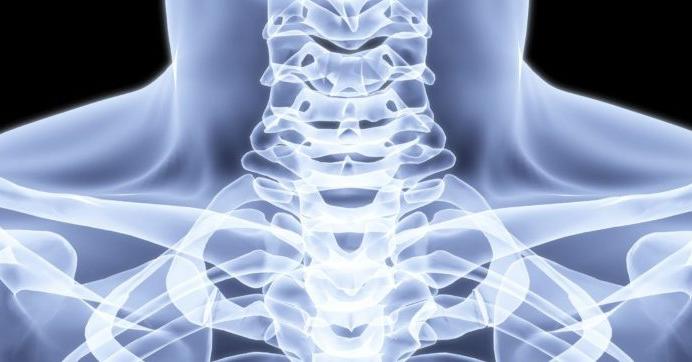Are you curious to know what is a rhizotomy? You have come to the right place as I am going to tell you everything about a rhizotomy in a very simple explanation. Without further discussion let’s begin to know what is a rhizotomy?
Living with chronic pain can be incredibly challenging, affecting both physical well-being and overall quality of life. In the pursuit of relief, individuals may explore various medical interventions. One such intervention that has gained attention in the field of pain management is “rhizotomy.” In this blog, we will delve into the concept of rhizotomy, its purpose, the different types, and its role in alleviating chronic pain.
What Is A Rhizotomy?
Rhizotomy, also known as neurotomy or denervation, is a medical procedure designed to target and disrupt the nerves responsible for transmitting pain signals from a specific area of the body to the brain. The procedure involves selectively damaging or ablating nerve fibers, thereby interrupting their ability to transmit pain sensations. Rhizotomy is often considered when other conservative treatments, such as medications, physical therapy, or injections, have not provided sufficient pain relief.
Types Of Rhizotomy
There are two primary types of rhizotomy procedures:
- Radiofrequency Rhizotomy: In this approach, a specialized needle is inserted near the targeted nerve under the guidance of imaging techniques such as fluoroscopy. Once the needle is in position, radiofrequency energy is used to create heat, which then disrupts the function of the nerve. This procedure is minimally invasive and can provide relief lasting several months to a year.
- Chemical Rhizotomy (Alcohol or Phenol Injection): This method involves injecting a chemical solution, typically alcohol or phenol, into or near the nerve. The chemical damages the nerve tissue, resulting in a reduction or loss of pain signals. Similar to radiofrequency rhizotomy, this approach offers temporary relief and may require repeat injections over time.
Candidates For Rhizotomy
Rhizotomy is considered for individuals experiencing chronic pain that originates from specific nerves or nerve clusters. Common conditions that may benefit from rhizotomy include:
- Facet joint pain in the spine
- Chronic back pain
- Sciatica (pain radiating down the leg)
- Neck pain
- Joint pain caused by arthritis
- Occipital neuralgia (headache originating from the neck)
- Trigeminal neuralgia (severe facial pain)
Benefits And Considerations
Rhizotomy offers several potential benefits for individuals living with chronic pain:
- Pain Relief: Rhizotomy can provide significant pain relief by interrupting the transmission of pain signals from the affected nerves.
- Improved Functionality: Reduced pain can lead to improved physical functionality, enabling individuals to engage in activities they previously struggled with.
- Reduced Medication Dependence: Successful rhizotomy may reduce the need for pain medications, which can have their own side effects and limitations.
However, it’s important to consider that rhizotomy is not a permanent solution. The effects of the procedure are usually temporary, and the nerves may regenerate over time, leading to a return of pain. Repeat procedures may be necessary to sustain the pain relief achieved.
Conclusion
Rhizotomy is a medical procedure that offers hope to individuals grappling with chronic pain, especially when other treatment methods have proven insufficient. By targeting the nerves responsible for pain transmission, rhizotomy can provide meaningful relief and enhance the quality of life for those burdened by persistent discomfort. If you or someone you know is considering rhizotomy as a pain management option, consulting a medical professional specializing in pain management can provide valuable insights and guidance tailored to individual circumstances.
For more information like this visit Weji.
FAQ
How Painful Is A Rhizotomy?
A rhizotomy takes between 30 minutes and an hour. You’ll be awake during the procedure so that you can provide feedback to the doctor but, if you’ve been given a mild sedative, you will be comfortable. Most patients feel pressure but do not experience pain during a rhizotomy.
What Is The Difference Between A Rhizotomy And An Ablation?
A nerve ablation and a rhizotomy have the same purpose: To damage nerve fibers that are causing pain or other issues. Rhizotomy is an umbrella term. Radiofrequency ablation (RFA) is a specific way of damaging the nerves using heat. Chemical ablation damages nerves using a substance that’s toxic to the nerves.
How Long Is Recovery From Rhizotomy?
Patients with more sedentary jobs may be able to return to work within a few days after the procedure, while those with more physically demanding jobs may need to take a few weeks off to recover.
What Is The Downside Of A Rhizotomy?
Glycerin/glycerol rhizotomy risks include bleeding, infection, nausea, vomiting, a small chance of sensory change (feeling of numbness) and anesthesia complications. Radiofrequency rhizotomy has a higher likelihood of causing sensory change (feelings of numbness) than the chemical method.
I Have Covered All The Following Queries And Topics In The Above Article
What Is A Rhizotomy
What Is A Rhizotomy Procedure
What Is A Facet Rhizotomy
What Is A Rhizotomy Injection
What Is A Cervical Rhizotomy
What Is A Lumbar Facet Rhizotomy
What Is The Procedure For A Rhizotomy?
What Is The Downside Of A Rhizotomy?
What Is A Glycerol Rhizotomy
What Is A Rhizotomy?
What Is A Rhizotomy
What is a rhizotomy procedure?
